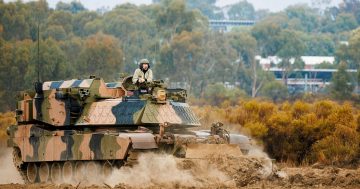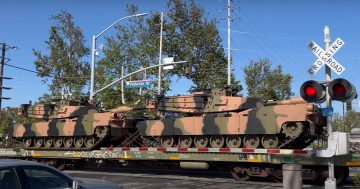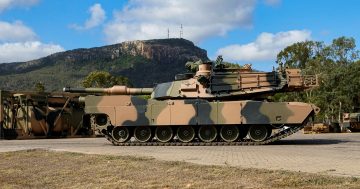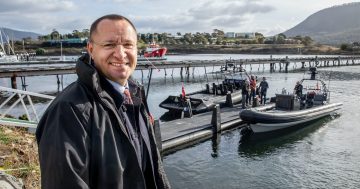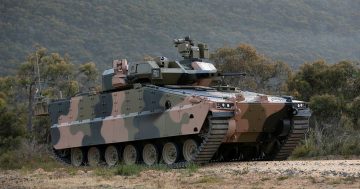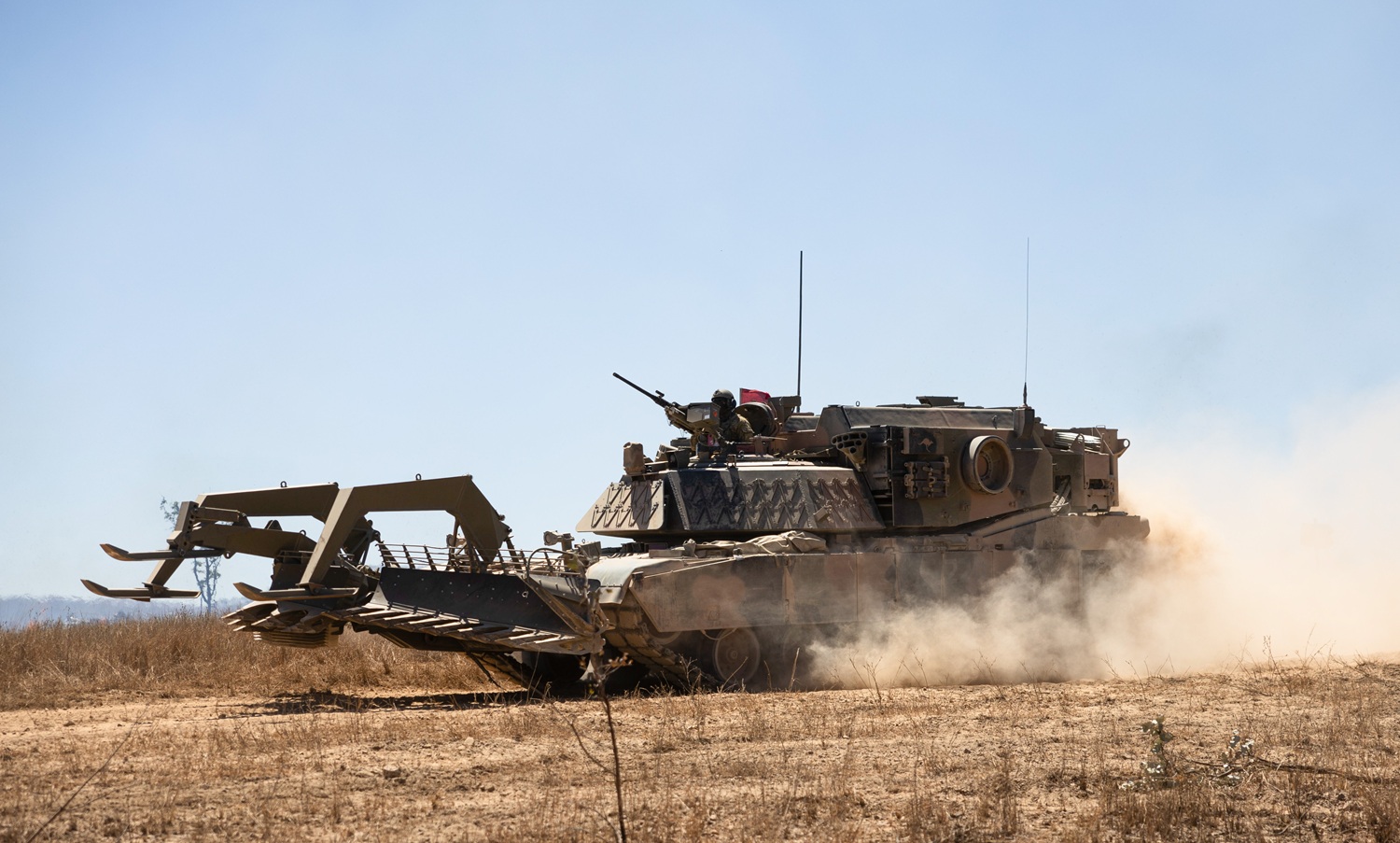
M1150 Assault Breaker armoured vehicle. Photo: ADF.
Several new combat engineering vehicles (CEV) recently introduced by the Australian Army have been put to the test in an intensive exercise and demonstration west of Townsville.
The activity was a demonstration of the Heavy Armoured Capability System (HACS) by the 3rd Combat Engineering Regiment (3CER) of the 3rd Brigade (3Bde), showcasing new vehicles for senior officers and civilians at the Townsville Field Training Area.
The new vehicles were acquired under the Army’s Project LAND 907 comprise M1150 Assault Breacher Vehicles and M1110 Joint Assault Bridges (JAB), both of which are based on the same chassis and running gear as the new M1A2 Abrams main battle tank (MBT).
The new vehicles also included an additional batch of M88 Hercules armoured recovery vehicles – also based on the Abrams – that have cranes and winches for towing or lifting damaged armoured vehicles, including MBTs, for recovery and repair.
After a period of training, the vehicles’ introduction to service has seen them tested in realistic and rehearsed scenarios against obstacles and other armoured vehicles, and deployed at sea aboard the Navy’s Canberra-class LHD, HMAS Adelaide.
The first cohort of combat engineers – or Sappers – trained on the new CEVs at the Army’s School of Armour at Puckapunyal near Seymour in central Victoria in June and July. The three-month course taught them to operate the vehicles, navigate terrain, clear obstacles, and provide essential support to armoured units in combat scenarios.
Sappers specialise in the clearance and preparation of battlefields, airstrips, harbours, or other areas that will host forces.
The M1150 looks menacing with its distended turret and large ploughs designed to dig up and push aside land mines and other obstructions through sheer force. It has a unique capability to deploy a rope-like clearing charge several hundred metres long that explodes and clears a lane through a minefield.
The M1110 JAB carries an ungainly folding bridge on its back that can quickly deploy to span a gap of up to 18 metres and can support a 70-tonne MBT and other heavy vehicles.
Army Brigadier Ben McLennan said the new combat engineering vehicles helped uphold the brigade’s mantra: twice the speed equals five times the advantage.
“Having these platforms here allows us to break through the most formidable defences that previously would have taken hours; now it takes a matter of minutes,” he said.
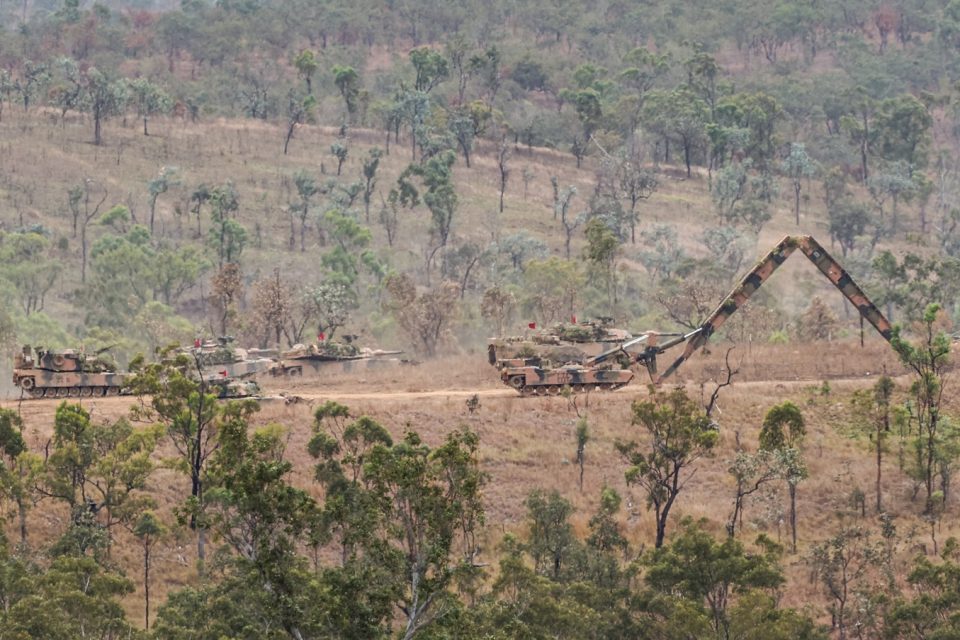
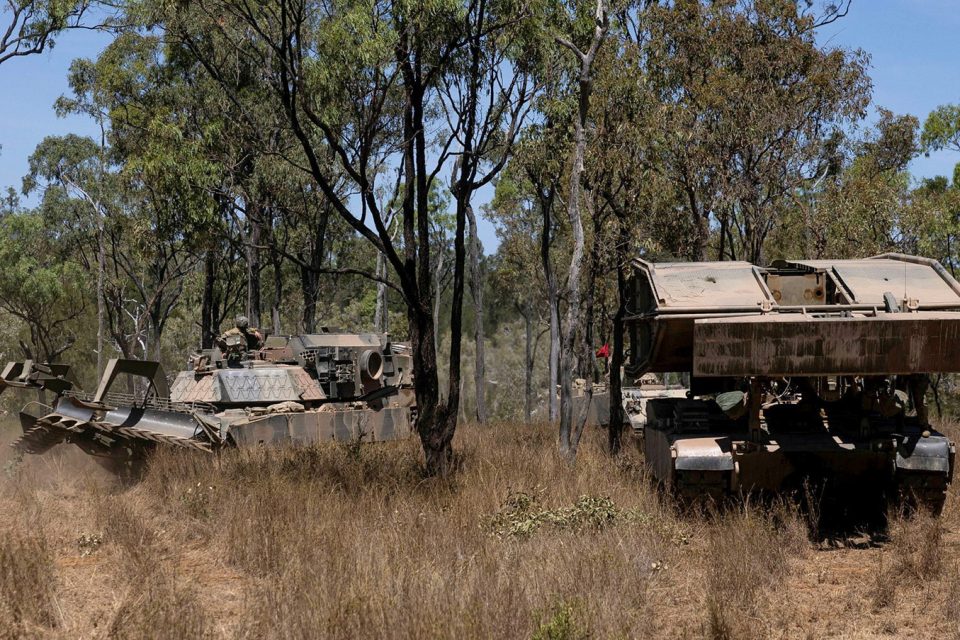
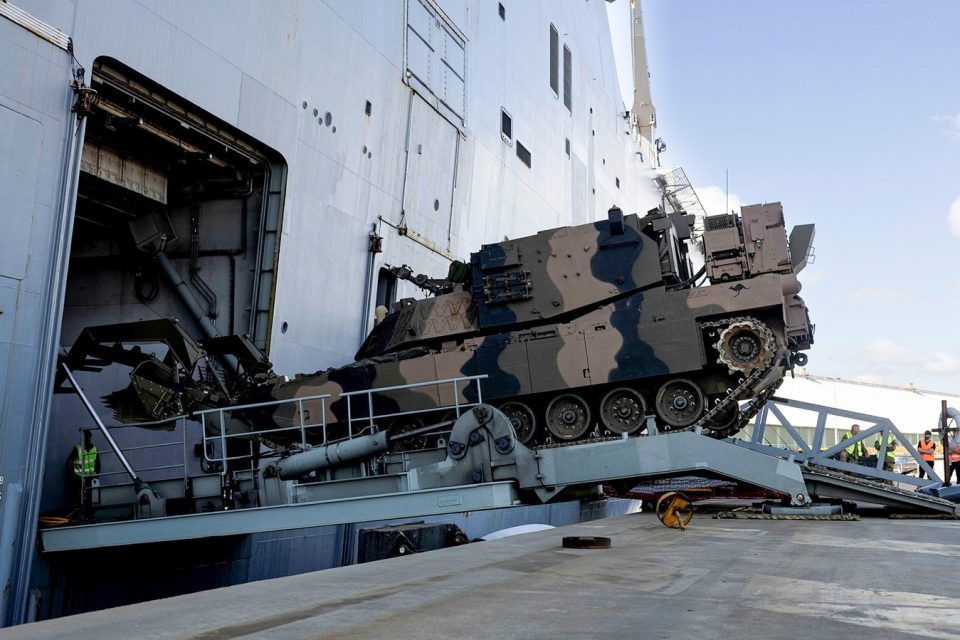
With the new vehicles based on the Abrams tank chassis, Brigadier McLennan said they also brought a level of protection the brigade’s engineers never had before.
“The tank gives us unmatched lethality in the close fight, and these new platforms – using the same tank’s chassis – give us that unmatched mobility,” he said.
With 3rd Brigade’s reclassification as an armoured formation earlier this year, Brigadier McLennan said his vehicles were only as good as their supporting logistics and command networks, meaning armoured breaching and attacks had to be practised along with supply, repair and recovery.
“It’s a system. If you don’t have the parts interdependent, working with each other, these will run out of fuel, they’ll get damaged, and we won’t be able to bring them back into the fight,” Brigadier McLennan said.
He stated that the brigade was now working on further integrating the combat engineering vehicles.
“We’re so grateful we’re the recipients of these types of platforms, and I know that our Army has worked in some cases for decades to get to this point,” Brigadier McLennan said.
3CER Commanding Officer Lieutenant Colonel Ryan Mitchell said that physically having the vehicles and testing and evaluating how they work has been impressive.
“They do what it says on the label,” he said.
“Two to three minutes to reduce an anti-tank minefield, three to four minutes to reduce an anti-tank ditch – that’s then enabling the assault force to move through unimpeded to clear the objective.
“Combine that with capabilities we had previously but now mounted in an armoured platform. That enables us to support an armoured formation.”
As part of their workup, the CEVs, along with new M1A2s and Boxer 8×8 Combat Reconnaissance vehicles (CRV), also deployed aboard HMAS Adelaide in early September for a series of sea transportability trials designed to assess how the vehicles embark and disembark from ships for engagement in the littoral environment.
“Testing their integration and mobility with the Navy’s LHDs demonstrates that we can move these vehicles rapidly and safely into areas where our forces are needed most,” Project Director Fundamental Inputs to Capability Colonel Ben Shepherd said.
Director Land Combat Vehicle Program – Army, Colonel David Hughes added, “This complements the amphibious activities by Army’s armoured force elements on Exercise Talisman Sabre 2025.
“This ensures that, wherever Australia’s interests are, Army can be there with the right capability at the right time.”


